Shia Muslim dynasties and countries in Islamic history
Throughout Islamic history, Sunni Muslim and Shia Muslim empires have co-existed and contributed to the development of Islamic civilization and culture. However, in the mainstream projections (in the media, curricula and historical accounts), contributions of Shia rulers and dynasties are often ignored or completely wiped out.
In many instances, Shias serves as important ministers and advisers in Sunni Caliphates and Sunnis served as important ministers and advisers in Shia Caliphates. Of course, there also were issues of tensions and expansions, not only against non-Muslim empires and dynasties but also against rival Islamic sects.
In this post, we present an overview of Shia Islamic empires to present a perspective of history which remains often hidden or unknown. The aim is not to project superiority of one sect over the other but to demonstrate that both Sunni and Shia sects have played an important role in the development of Islamic culture and civilization.
The following are examples of some of the Shia Islamic empires through history:
Idrisids 788-974
The Idrisids (al-Idārisah, Berber: Idrisiyen) were a Zaydi-Shia dynasty of Morocco, ruling from 788 to 974. It was named after its founder Idriss I, the great grandchild of Hasan ibn Ali. Idrisids are traditionally regarded as the founders of the Moroccan state.
The founder of the dynasty was Idris ibn Abdallah (788–791), who traced his ancestry back to Ali ibn Abi Talib and his wife Fatimah, daughter of the Prophet Muhammad. After the battle of Fakh, near Mecca, between the Abbasids and a Shiite party, he fled to the Maghreb. He first arrived in Tangier, at that time the most important city of Morocco, and by 788 he had settled in Volubilis.
The powerful Awraba Berbers of Volubilis (or Walili as the Berbers called it) took him in and made him their ‘imam’ (religious leader). The Awraba tribe was originally from the Tlemcen region and had supported Kusayla in his struggle against the Ummayad armies in the 670s and 680s. By the second half of the 8th century they had settled in northern Morocco, where their leader Ishak had his base in the Roman town of Volubilis. By this time the Awraba were already Muslim, but lived in an area where most tribes were either Christian, Jewish, Khariji or pagan. The Awraba seem to have welcomed a Sharifi imam as a way to strengthen their political position. Idris I, who was very active in the political organization of the Awraba, started instantly with the strengthening of his position and the subjugation of the Christian and Jewish tribes. In 789 he founded a settlement south east of Vollubilis, called Medinat Fas. In 791 Idris I was poisoned and killed by an Abbasid agent. Even though he left no male heir, his concubine Lalla Kanza bint Uqba al-Awrabi, gave him his only son and successor shortly after his death, Idris II. Idris’ loyal Arab ex-slave and companion Rashid brought up his son and took on himself the regency of the state, on behalf of the Awraba. In 801 Rashid was killed by the Abbasids. In the following year, at the age of 11 years, Idris II was proclaimed imam by the Awraba.
Even though his father had spread his authority across much of northern Morocco, as far west as Tlemcen, he was completely dependent on the Awraba leadership. Idris II started instantly with the weakening of Awraba power, by welcoming Arab settlers in Walili and the appointment of two Arabs as his vizier and qadi. Thus he transformed himself from a protégé of the Awraba into their sovereign. The Awraba leader Ishak responded by plotting against his life with the Aghlabids of Tunisia. Idris reacted by having his former protector Ishak killed and in 809 moved his seat of government from the Awraba dominated Walili to Fes, where he founded a new settlement named Al-‘Aliya. Idriss II (791–828) developed the city of Fez, already founded by his father as a Berber market town. Here he welcomed two waves of Arab immigration: one in 818 from Cordoba and another in 824 from Aghlabid Tunisia, giving Fes a more Arab character than other Maghrebi cities. When Idris II died in 828, the Idrisid state stretched from western Algeria to the Sous in southern Morocco and had become the leading state of Morocco, ahead of the principalities of Sijilmasa, Barghawata and Nekor.
Under his son and successor Muhammad (828–836) the kingdom was divided amongst eight brothers, whereby nine Idrisid statelets formed in Morocco and Algeria. Muhammad himself came to rule Fes, with only nominal power over his brothers. During this time Islamic and Arabic culture gained a stronghold in the towns and Morocco profited from the trans-Saharan trade, which came to be dominated by Muslim (mostly Berber) traders.
Even so, the Islamic and Arabic culture only made its influence felt in the towns, with the far majority of Morocco’s population clinging to their Berber language and often adhering to Islamic heterodox and heretical doctrines: the Idrisids were principally rulers of the towns and had little power over the far majority of the country’s population. The Idrisid family in turn was heavily berberised, with its members aligning itself with the Zenata tribes of Morocco. Already in the 870s the family was described by Ibn Qutaybah as being berberised in customs. By the 11th century this process had developed to such an extant, that the family was fully integrated in the Berber societies of Morocco. In the 11th century the Hammudid family arose among these Berber Idrisids, which was able to gain power in several cities of northern Morocco and southern Spain.
In 868 the Berber Khariji tribes of Madyuna, Ghayata and Miknasa of the Fes region formed a common front against the Idrisids. From their base in Sefrou they were able to defeat and kill the Idrisid Ali ibn Umar and occupy Fes. His brother Yahya was able to retake the city in 880 and establish himself as the new ruler. The Idrisids attacked the Kharijis of Barghawata and Sijilmasa, and the Sunnis of Nekor multiple times, but were never able to include these territories in their state.
In 917 the Miknasa and its leader Masala ibn Habus, acting on behalf of their Fatimid allies, attacked Fes and forced Yahya ibn Idris to recognize Fatimid suzerainty, before deposing him in 921. Hassan I al-Hajam managed to wrest control of Fez from 925 until 927 but he was the last of the dynasty to hold power there. From Fes, the Miknasa began a violent hunt across Morocco for members of the Idrisid family, seeking to exterminate them. Most of the Idrisids settled among the Berber tribes of the Rif Mountains where they were protected by the reluctance of tribal elders to have the local descendants of the Prophet Muhammad’s family be whiped out. In the Rif they had a stronghold in the fortress of Hajar an-Nasar, from where they tried to restore their power base, until the last Idrisid made the mistake of switching allegiances back to the Fatimids, and was deposed and executed in 985 by the Cordobans.
Rulers
Idris I – (788-791)
Idris II – (791-828)
Muhammad ibn Idris – (828-836)
Ali ibn Muhammad, known as “Ali I” – (836-848)
Yahya ibn Muhammad, known as “Yahya I” – (848-864)
Yahya ibn Yahya, known as “Yahya II” – (864-874)
Ali ibn Umar, known as “Ali II” – (874-883)
Yahya ibn Al-Qassim, known as “Yahya III” – (883-904)
Yahya ibn Idris ibn Umar, known as “Yahya IV” – (904-917)
Fatimid overlordship – (917-925)
Al-Hajjam al-Hasan ibn Muhammad ibn al-Qassim – (925-927)
Fatimid overlordship – (927-937)
Al Qasim Gannum – (937-948)
Abu l-Aish Ahmad – (948-954)
Al-Hasan ibn Guennoun, known as “Hassan II” – (954-974) (not to be confused with Hassan II, born in 1929)
Offshoots of the Idrisid dynasty
Hammudid dynasty in al-Andalus – (1016–1058)
Idrisid sultans of Morocco (Joutey branch) – (1465–1471)
Idrisid princes of Chefchaouen (Alami branch) – (1471–1561)
Idrisid emirs of Asir – (1906–1934)
Senussi dynasty of Libya – (1918–1969)
Fatimids 909-1171
The Fatimid Islamic Caliphate or al-Fāṭimiyyūn was a Isma’ili Shi’a Muslim caliphate that spanned a vast area of the Arab World, from the Red Sea in the east to the Atlantic Ocean in the west. Originally based in Tunisia, the Fatimid dynasty extended their rule across the Mediterranean coast of Africa, and ultimately made Egypt the centre of their caliphate. At its height, in addition to Egypt, the caliphate included varying areas of the Maghreb, Sudan, Sicily, the Levant, and Hijaz.
The Fatimids established the Tunisian city of Mahdia and made it their capital city, before conquering Egypt, and building the city of Cairo in 969. Thereafter, Cairo became the capital of the caliphate, with Egypt becoming the political, cultural, and religious centre of the state. The 4th century AH /10th century CE has been called by Louis Massignon ‘the Ismaili century in the history of Islam’.
The term Fatimite is sometimes used to refer to the citizens of this caliphate. The ruling elite of the state belonged to the Ismaili branch of Shi’ism. The leaders of the dynasty were also Shia Ismaili Imams, hence, they had a religious significance to Ismaili Muslims. They are also part of the chain of holders of the office of Caliph, as recognized by some Muslims. Therefore, this constitutes a rare period in history in which the descendants of Ali (hence the name Fatimid, referring to Ali’s wife Fatima) and the Caliphate were united to any degree, excepting the final period of the Rashidun Caliphate under Ali himself.
The caliphate was reputed to exercise a degree of religious tolerance towards non-Ismaili sects of Islam as well as towards Jews, Maltese Christians, and Coptic Christians.
In addition to being considered one of the most important Arab empires in the Islamic era, the Fatimid caliphate was also distinguished by the prominent role of Berbers in its initial establishment. The caliphate lasted from 909 to 1171, when Saladin became Sultan of Egypt, and returned the country to the nominal fealty of the Sunni Muslim Abbasid caliphate.
The Fatimid state originated among the Kutama people of Algeria. The dynasty was founded in 909 by ʻAbdullāh al-Mahdī Billah, who in the late 9th century started a movement among the Kutama Berbers and managed to convert them to Shi’a Islam. He would seize Tunis the same year.
Abdullāh al-Mahdi made his claim through his descent from Muhammad by way of his daughter Fātima az-Zahra. For the first half of its existence the empire’s power rested primarily on the Kutama Berbers and their strength, with a Berber army conquering northern Africa, Palestine, Syria and, for a short time, Baghdad. Their role within the Fatimid state was so central that Ibn Khaldun counted the Fatimids among the Berber dynasties. The Fatimids existed during the Islamic Golden Age.
Abdullāh al-Mahdi’s control soon extended over all of central Maghreb, an area consisting of the modern countries of Morocco, Algeria, Tunisia, and Libya, which he ruled from Mahdia, his newly built capital in Tunisia.
Under Al-Muizz Lideenillah, the Fatimids entered Egypt (may refer Fatimid Egypt) in the late 10th century, conquering the Ikhshidid dynasty, and founding a new capital at al-Qāhira (Cairo) in 969. The name was a reference to the planet Mars, “The Subduer”, which was prominent in the sky at the moment that city construction started. Cairo was intended as a royal enclosure for the Fatimid caliph and his army, though the actual administrative and economic capital of Egypt was in cities such as Fustat until 1169. After Egypt, the Fatimids continued to conquer the surrounding areas until they ruled from Tunisia to Syria, and even ruling Sicily, and southern parts of the Italian Peninsula.
Under the Fatimids, Egypt became the center of an empire that included at its peak North Africa, Sicily, Palestine, Jordan, Lebanon, Syria, the Red Sea coast of Africa, Hejaz, and Yemen. Egypt flourished, and the Fatimids developed an extensive trade network in both the Mediterranean and the Indian Ocean. Their trade and diplomatic ties extended all the way to China and its Song Dynasty, which eventually determined the economic course of Egypt during the High Middle Ages.
Unlike other governments in the area, Fatimid advancement in state offices was based more on merit than on heredity. Members of other branches of Islam, like the Sunnis, were just as likely to be appointed to government posts as Shiites. Tolerance was extended to non-Muslims such as Christians, and Jews, who occupied high levels in government based on ability, and tolerance was set into place to ensure the flow of money from all those who were non-Muslims too in order to finance the Fatimids Caliphs’ large army of Mamluks brought in from Circassia by Genoese merchants. There were, however, exceptions to this general attitude of tolerance, most notably Al-Hakim bi-Amr Allah although this has been highly debated, with Al-Hakim’s reputation among medieval Muslim historians conflated with his role in the Druze faith.
The Fatimids were also known to a great extent for their exquisite arts. A type of ceramic, lustreware, was prevalent during the Fatimid period. Glassware and metalworking was also popular. Many traces of Fatimid architecture exist in Cairo today, the most defining examples include the Al Azhar University and the Al Hakim mosque. The Al Azhar University was the first university in the East and perhaps the oldest in history. The madrasa is one of the relics of the Fatimid dynasty era of Egypt, descended from Fatimah, daughter of Muhammad. It was founded as mosque by the Fatimid commander Jawhar at the orders of the Caliph Al-Muizz as he founded the city for Cairo. It was (probably on Saturday) in Jamadi al-Awwal in the year 359 A.H. Its building was completed on the 9th of Ramadan in the year 361 A.H. Both Al-‘Aziz Billah and Al-Hakim bi-Amr Allah added to its premises. It was further repaired, renovated and extended by Al-Mustansir Billah and Al-Hafiz Li-Din-illah. Fatimid Caliphs always encouraged scholars and jurists to have their study-circles and gatherings in this mosque and thus it was turned into a university which has the claim to be considered as the oldest University still functioning.
The intellectual life in Egypt during the Fatimid period reached a great degree of progress and activity due to the number of scholars who either lived in Egypt or came from outside as well as the number of books available and written on various fields of study. The Fatimid Caliphs gave prominent positions to the scholars in their courts and encouraged the students. Fatimids paid attention to establishing libraries in their palaces so that the scholars might polish up their knowledge and get benefit of what their predecessors had done.
Perhaps the most significant feature of Fatimid rule was that freedom which was given out to the people and liberty was given to the minds and reasons. Man may believe in whatever he likes provided that he may not infringe other rights. Fatimids reserved separate pulpits for different Islamic sects, where the scholars expressed their ideas in whatever the manner they liked. Fatimids gave patronage to scholars and invited them from every place, spending money on them and neglecting what they believed in, even though it was against the beliefs of the Fatimids. The history of the Fatimids, from this point of view, is in fact the history of knowledge, literature and philosophy. It is the history of sacred freedom – freedom of expression.
Fatimid caliphs
Abū Muḥammad ʻAbdul-Lāh al-Mahdī bi’llāh (909-934) founder Fatimid dynasty
Abū l-Qāsim Muḥammad al-Qā’im bi-Amr Allāh (934-946)
Abū Ṭāhir Ismā’il al-Manṣūr bi-llāh (946-953)
Abū Tamīm Ma’add al-Mu’izz li-Dīn Allāh (953-975) Egypt is conquered during his reign
Abū Manṣūr Nizār al-‘Azīz bi-llāh (975-996)
Abū ‘Alī al-Manṣūr al-Ḥākim bi-Amr Allāh (996-1021)
Abū’l-Ḥasan ‘Alī al-Ẓāhir li-I’zāz Dīn Allāh (1021–1036)
Abū Tamīm Ma’add al-Mustanṣir bi-llāh (1036–1094)
al-Musta’lī bi-llāh (1094–1101) Quarrels over his succession led to the Nizari split.
al-Āmir bi-Aḥkām Allāh (1101–1130) The Fatimid rulers of Egypt after him are not recognized as Imams by Mustaali/Taiyabi Ismailis.
‘Abd al-Majīd al-Ḥāfiẓ (1130–1149)
al-Ẓāfir (1149–1154)
al-Fā’iz (1154–1160)
al-‘Āḍid (1160–1171).
The Banu Ukhaidhir 867-1050
The Banu ‘l-Ukhaidhir was a dynasty that ruled in al-Yamamah (central Arabia) from 867 to at least the mid-eleventh century. An Alid dynasty, they were descendents of Muhammad through his daughter Fatimah and his grandson Al-Hasan, and at least one contemporary traveller describes them as having been Shi’ites of the Zaydi persuasion. Their capital was known as al-Khidhrimah, which lay near the present-day city of Al-Kharj in Saudi Arabia.
The founder of the dynasty was Muhammad ibn Yusuf al-Ukhaidhir. Muhammad’s brother Isma’il had launched a rebellion in the Hejaz in 865 against the Abbasid government and temporarily occupied the city of Mecca. After Isma’il’s death the following year, Muhammad began stirring up trouble along the road running between the Hejaz and Iraq, but was defeated by the road’s governor Abu ‘l-Saj Dewdad. Fleeing from the government forces, he made his way in al-Yamamah and established himself there in 867.
Al-Yamamah at the time was nominally part of the Abbasid Caliphate, but the central government had largely neglected the area for years due to its remoteness. With the exception of the occasional raid by government forces, the tribes there were largely self-governing. When Muhammad arrived in al-Yamamah, he likely gained the support of the Banu Hanifa, the largest tribe in the area, and created an independent emirate.
Qaramatians 897-1068
According to the Ismaili school of thought, Imām Jaʿfar al-Ṣādiq (702–765) designated his eldest son, Isma’il ibn Jafar (ca. 721–755), as heir to the Imamate. However, Ismā‘īl predeceased his father. Some claimed he had gone into hiding, but the proto-Ismā‘īlī group accepted his death and therefore accordingly recognized Ismā‘īl’s eldest son, Muḥammad ibn Ismā‘īl (746–809), as Imām. He remained in contact with the Mubārakiyyah group, most of whom resided in Kūfah.
The split among the Mubārakiyyah came with the death of Muḥammad ibn Ismā‘īl (ca. 813 CE). The majority of the group denied his death; they recognized him as the Mahdi. The minority believed in his death and would eventually emerge in later times as the Fāṭimid Ismā‘īlī, the precursors to all modern groups.
The majority Ismā‘īlī missionary movement settled in Salamiyah (in present-day Syria) and had great success in Khuzestan (Southwestern Persia), where the Ismā‘īlī leader al-Husayn al-Ahwāzī converted the Kūfan man Ḥamdān in 874 CE, who took the name Qarmaṭ after his new faith. Qarmaṭ and his theologian brother-in-law ‘Abdān prepared southern Iraq for the coming of the Mahdi by creating a military and religious stronghold. Other such locations grew up in Yemen, in Bahrain in 899 CE and in North Africa. These attracted many new Shī‘ī followers due to their activist and messianic teachings. This new proto-Qarmaṭī movement continued to spread into Greater Iran and then into Transoxiana.
A change in leadership in Salamiyyah in 899 led to a split in the movement. The minority Ismā‘īlīs, whose leader had taken control of the Salamiyyah centre, began to proclaim their teachings – that Imām Muḥammad had died, and that the new leader in Salamiyyah was in fact his descendant come out of hiding. Qarmaṭ and his brother-in-law opposed this and openly broke with the Salamiyyids; when ‘Abdān was assassinated, he went into hiding and subsequently repented. Qarmaṭ became a missionary of the new Imām, Ubayd Allah al-Mahdi Billah (873–934), who founded the Fatimid Caliphate in North Africa in 909.
Nonetheless, the dissident group retained the name Qarmaṭī. Their greatest stronghold remained in Bahrain, which at this period included much of eastern Arabia as well as the islands that comprise the present state, was under Abbasid control at the end of the ninth century, but a slave rebellion in Basra disrupted the power of Baghdad. The Qarmaṭians seized their opportunity under their leader, Abū-Saʿīd Jannābī, who captured Bahrain’s capital Hajr and al-Hasa in 899, which he made the capital of his republic and once in control of the state he sought to set up a utopian society.
The revolution and desecration shocked the Muslim world and humiliated the Abbasids. But little that could be done; for much of the tenth century the Qarmatians were the most powerful force in the Persian Gulf and Middle East, controlling the coast of Oman and collecting tribute from the caliph in Baghdad as well as from a rival Ismaili imam in Cairo, whom they did not recognize.
The Qarmatians aimed to build a society based on reason and equality. The state was governed by a council of six with a chief who was a first among equals. All property within the community was distributed evenly among all initiates. The Qarmatians were organized as an esoteric society but not as a secret one. Their activities were public and openly propagated, but new members had to undergo an initiation ceremony involving seven stages. In an echo of cyclical Mazdean thought, the Qarmatian world view was one where every phenomenon repeated itself in cycles, where every incident was replayed over and over again.
The land they ruled over was extremely wealthy with a huge slave-based economy according to academic Yitzhak Nakash:
The Qarmatian state had vast fruit and grain estates both on the islands and in Hasa and Qatif. Nasiri Khusru, who visited Hasa in 1051, recounted that these estates were cultivated by some thirty thousand Ethiopian slaves. He mentions that the people of Hasa were exempt from taxes. Those impoverished or in debt could obtain a loan until they put their affairs in order. No interest was taken on loans, and token lead money was used for all local transactions. The Qarmathian state had a powerful and long-lasting legacy. This is evidenced by a coin known as Tawila, minted around 920 by one of the Qarmathian rulers, and which was still in circulation in Hasa early in the twentieth century.
The sack of Mecca followed millenarian fervour among the Qarmatians (as well as in Persia) over the conjunction of Saturn and Jupiter in 928—an event which the Qarmat leader Abū Ṭāhir al-Ḏj̲annābī believed indicated the end of the epoch of Islam and the beginning of the final religious era. The year 931 was also highly important for the Qarmatians’ mahdi fervor, as it was 1,500 years after the prophet Zoroaster’s death and the end of the epoch of Alexander, which predicted the reign of the Magians. Therefore, in 931 Abu Tahir handed over power to a young Persian man whom he believed to be the awaited mahdi. This new Persian Qarmatian leader acted unexpectedly, forbidding Islamic law and prayer, ordering the cursing of many imams and Muslim prophets, supported the worship of fire, killed prominent Qarmati leaders, and proclaimed a religion centered on Adam, the first man. The expected mahdi ruled only 80 days; Abu Tahir had no choice but to kill him, though his bizzare rule severely destabilized the Qarmatian movement.
After defeat by the Abbasids in 976 the Qarmatians began to look inwards and their status was reduced to that of a local power. This had important repercussions for the Qarmatians’ ability to extract tribute from the region; according to Arabist historian Curtis Larsen:
As tribute payments were progressively cut off, either by the subsequent government in Iraq or by rival Arab tribes, the Carmathian state shrank to local dimensions. Bahrain broke away in AD 1058 under the leadership of Abu al-Bahlul al-Awwam who re-established orthodox Islam on the islands. Similar revolts removed Qatif from Carmathian control at about the same time. Deprived of all outside income and control of the coasts, the Carmathians retreated to their stronghold at the Hofuf Oasis. Their dynasty was finally dealt a final blow in 1067 by the combined forces of Abdullah al-Uyuni, who with the help of Seljuk army contingents from Iraq, laid siege to Hofuf for seven years and finally forced the Carmathians to surrender.
In Bahrain and eastern Arabia the Qarmatian state was replaced by the Uyunid dynasty, while it is believed that by the middle of the eleventh century Qarmatian communities in Iraq, Iran and Transoxiana had either been won over by Fatamid proselytising or had disintegrated.
Buyids 934-1055
The Buyid dynasty or the Buyids (also known as Āl-e Buye or Buwaihids) were a Shia Muslim dynasty that originated from Daylaman in Gilan. They founded a confederation that controlled most of modern-day Iran and Iraq in the 10th and 11th centuries.
The founders of the Būyid confederation were ‘Alī ibn Būyah and his two younger brothers, al-Hassan and Aḥmad. Originally a soldier in the service of the Ziyārīds of Ṭabaristān, ‘Alī was able to recruit an army to defeat a Turkish general from Baghdad named Yaqut in 934. Over the next nine years the three brothers gained control of the remainder of the ‘Abbāsid Caliphate. While they accepted the titular authority of the caliph in Baghdad, the Būyid rulers assumed effective control of the state.
The first several decades of the Būyid confederation were characterized by large territorial gains. In addition to Fars and Jibal, which were conquered in the 930s, and central Iraq, which submitted in 945, the Būyids took Kermān (967), Oman (967), the Jazīra (979), Ṭabaristān (980), and Gorgan (981). After this, however, the Būyids went into a slow decline, with pieces of the confederation gradually breaking off and local dynasties under their rule becoming de facto independent.
The approximate century of Būyid rule, coupled with the rise of other Iranian dynasties in the region, represents a period in Iranian history sometimes called the ‘Iranian Intermezzo’ since it was an interlude between the rule of the ‘Abbāsid Arabs and the Seljuq Turks.
The Buyid confederation was split between and governed by multiple members of the dynasty. They nominally recognized the suzerainty of caliphs of Baghdad, who in reality had no temporal power within the state. The title used by the Buyid rulers was amīr, meaning “governor” or “prince”. Generally one of the amīrs would be recognized as having seniority over the others; this individual would use the title of amīr al-umarā’, or senior amīr. Although the senior amīr was the formal head of the Būyids, he did not usually have any significant control outside of his own personal amirate; each amir enjoyed a high degree of autonomy within his own territories.
The Būyid army consisted of their fellow Dailamite Iranians, who served as foot soldiers, and of the Turkish cavalry that had played a prominent role in the ‘Abbāsid military. The Dailamites and Turks often quarreled with each other in an attempt to be the dominant force within the army.
Like most Daylamites at the time, the Būyids were originally Zaydī or Fiver Shī’as. After taking power in Iran and Iraq, however, they began to lean closer to Twelver Shī’ism, possibly due to political considerations. In fact, the Būyids rarely attempted to enforce a particular religious view upon their subjects except when in matters where it would be politically expedient. The Sunnī ‘Abbāsids retained the caliphate, although they were deprived of all secular power. In addition, in order to prevent tensions between the Shī’a and Sunni from spreading to government agencies, the Būyid amirs occasionally appointed Christians to high offices instead of Muslims from either sect.
Buyids were Shia and have been called Twelver Shia. However, it is more likely that began as Zaydi Shia’. As the reason of this turning from Zaydis to Twelver Moojen Momen suggests that since the Buyids were not descendants of Ali, the first Shia Imam, Zaydis Shi’ism doctrine would have urged them to install an Imam from Ali’s family. For that reason Buyids tended toward Twelver Shia’ which its occulted Imam was more politically attractive to them.
Buyid Rulers:
Major rulers
Generally, the three most powerful Buyid amirs at any given time were those in control of Fars, Jibal and Iraq. Sometimes a ruler would come to rule more than one region, but no Buyid rulers ever exercised direct control of all three regions.
Daylamids of Fars
Ali b. Buya (‘Imad al-Dawla) 934–949
Fana Khusraw (‘Adud al-Dawla) 949–983
Shirzil b. Fana Khusraw (Sharaf al-Dawla) 983–989
Marzuban b. Fana Khusraw (Samsam al-Dawla) 989–998
Firuz b. Fana Khusraw (Baha’ al-Dawla) 998–1012
Abu Shuja’ b. Firuz (Sultan al-Dawla) 1012–1024
Abu Kalijar Marzuban b. Abu Shuja’ (Imad al-Din) 1024–1048
Abu Mansur Fulad Sutun 1048–1062
Daylamids of Rey
Rukn al-Dawla 935–976
Fakhr al-Dawla 976–980
Mu’ayyad al-Dawla 980–983
Fakhr al-Dawla (restored) 984–997
Majd al-Dawla 997–1029
Daylamids of Iraq
Mu’izz al-Dawla 945–967
‘Izz al-Dawla 966–978
‘Adud al-Dawla 978–983
Samsam al-Dawla 983–987
Sharaf al-Dawla 987–989
Baha’ al-Dawla 989–1012
Sultan al-Dawla 1012–1021
Musharrif al-Dawla 1021–1025
Jalal al-Dawla 1025–1044
Abu Kalijar 1044–1048
al-Malik ar-Rahim 1048–1055
Minor rulers
It was not uncommon for younger sons to found collateral lines, or for individual Buyid members to take control of a province and begin ruling there. The following list is incomplete.
Buyids of Basra
Diya’ al-Dawla 980s
To the Buyids of Fars.
Buyids of Hamadan
Mu’ayyad al-Dawla 976–983
Shams al-Dawla 997–1021
Sama’ al-Dawla 1021–1024
Buyids of Kerman
Qawam al-Dawla 1012–1028
Buyids of Khuzistan
Taj al-Dawla 980s
Kalbids 948-1053
The Kalbids were a Shia Muslim dynasty in Sicily, which ruled from 948 to 1053 . In 827, in the midst of internal Byzantine conflict, the Aghlabids arrived at Marsala in Sicily, with a fleet of 10,000 men under the command of Asad ibn al-Furat. Palermo was conquered in 831 and became the new capital. Syracuse fell in 878 and in 902 the last Byzantine outpost, Taormina, was taken. At the same time various Muslim incursions into southern Italy occurred, with new Emirates being founded in Taranto and Bari. During this period there were constant power struggles amongst the Muslims. Nominally the island was under rule of the Aghlabids and later the Fatimids.
After successfully suppressing a revolt the Fatimid caliph appointed Hassan al-Kalbi (948-964) as Emir of Sicily, the first of the Kalbid dynasty. The Fatimids appointed the Kalbids as rulers via proxy before they shifted their capital from Ifriqiya to Cairo in 969. Raids into southern Italy continued under the Kalbids into the 11th century, and in 982 a German army under Otto II was defeated in the Battle of Stilo near Crotone in Calabria. The dynasty began a steady period of decline with the Emirate of Yusuf al-Kalbi (990-998) who entrusted the island to his sons and created space for interference from the Zirids of Ifriqiya. Under al-Akhal (1017-1037) the dynastic conflict intensified, with factions allying themselves variously with Byzantium and the Zirids. Even though neither of these powers could establish themselves in Sicily permanently, under Hasan as-Samsam (1040-1053) the island fragmented into small fiefdoms. The Kalbids died out in 1053, and in 1061 the Normans of southern Italy arrived under Roger I of Sicily and began their conquest, which was completed in 1091. The Muslims were allowed to remain and played an important role in the administration, army and economy of the Norman kingdom until the 12th century.
Under the Kalbid dynasty, Sicily, and especially Palermo, was an important economic centre of the Mediterranean. The Muslims introduced lemons, Seville oranges and sugar cane, as well as cotton and mulberries for sericulture, and built irrigation systems for agriculture. Sicily was also an important hub for trade between the Near East, North Africa and the Italian maritime republics such as Amalfi, Pisa and Genoa.
Rulers
Hassan al-Kalbi (948-954)
Ahmad ibn Ḥasan (954-969)
Abū l-Qāsim ʿAlī ibn al-Ḥasan (969-982)
Jabir al-Kalbi (982-983)
Jafar al-Kalbi (983-985)
Abd-Allah al-Kalbi (985-990)
Yusuf al-Kalbi (990-998)
Ja’far al-Kalbi (998-1019)
al-Akhal (1019-1037)
Abdallah (1037-1040)
Hasan as-Samsam (1040-1053)
Rassids 897-1962
The Imams of Yemen and later the Kings of Yemen were religiously consecrated leaders belonging to the Zaidiyyah branch of Shia Islam. They established a blend of religious and secular rule in parts of Yemen from 897. Their imamate endured under varying circumstances until the republican revolution in 1962. Zaidiyyah theology differed from Ismailis or Twelver Shi’ites by stressing the presence of an active and visible imam as leader. The imam was expected to be knowledgeable in religious sciences, and to prove himself a worthy headman of the community, even in battle if this was necessary. A claimant of the imamate would proclaim a “call” (da’wa), and there were not infrequently more than one claimant. The term Rassids usually refers to the Imams of the medieval period, up to the 16th century, the later ones being known as Qasimids (Al al-Qasimi).
In 893 al-Hadi Yahya bin al-Hussain bin al-Qasim ar-Rassi (a descendant of Imam al-Hasan), was invited from Medina to the Northern Highlands of Yemen as an arbiter between the local tribes. Later with the help of the Hamdan tribes of Hashid and Bakil, al-Hadi Yahya bin al-Hussain bin al-Qasim ar-Rassi founded the Zaidi Imamate of Yemen at Sa’da, in 893-7 C.E. He made Zaidi Islam the state religion. He died in 911, and the state he had created crumbled after the death of his able son an-Nasir Ahmad in 934. After the 10th century, succession to the imamate tended not to be hereditary, but circulated among various Sayyid branches. Most, though not all, Imams were descended from al-Hadi Yahya or his grandfather al-Qasim ar-Rassi (d. 860). The term Rassids usually refers to the Imams of the medieval period, up to the 16th century, the later ones being known as Qasimids (Al al-Qasimi).
The Zaydi imamate in Yemen has its origins in 897, when al-Hadi ila al-Haqq Yahya became the first Zaydi imam (with his seat in Saʿda). His fame as an intellectual as well as a leader led to the invitation to Yemen; there he developed a multitude of policies that eventually became the basic guidelines for the religious as well as political characteristics of Yemeni Zaydism.
Yahya, however, was not able to consolidate his rule in all of Yemen; there were revolts as well as segments of the population that did not accept his pretensions to religio-political rule. Although he did not succeed in establishing any permanent administrative infrastructure, Yahya’s descendants became the local aristocracy, and it is from among them that the imams of Yemen were selected for the next one thousand years.
Yemen throughout most of that period was only rarely a unified political entity; in fact, what was included within its frontiers varied widely, and it has not been governed consistently or uniformly by any single set of rulers. It existed as a part of a number of different political systems/ruling dynasties between the ninth and sixteenth centuries, after which it became a part of the Ottoman Empire.
After Imam Yahya’s death, a multitude of smaller dynasties and families established themselves in the Tihama (the low coastal plain) as well as in the highlands. Among the better known of these are the Sulayhids, the Hatims, the Zuray’ids, and the Yu’firids. It was during this period, when the Fatimid state was influential, that a portion of the population was converted to Ismaʿili Shiʿism.
Beginning with the conquest of Yemen by the family of Salah al-Din ibn Ayyub (Saladin) in 1174, a series of dynasties exercised a modicum of control and administration in Yemen for roughly the next 400 years; these are, in chronological sequence, the Ayyubids, from 1173/74 to 1228; the Rasulids, from 1228 to 1454; the Tahirids, from 1454 to 1517; and the Mamluks, from 1517 to 1538, when the Ottoman Empire took the Yemeni Tihama.
During most of this period, the dynasties and their rulers were primarily engaged in familial, regional, and occasionally sectarian disputes. Ironically, the Sunni Rasulids, who eventually concentrated their rule in southern Yemen for precisely that reason, were the dynasty under which the region experienced the greatest economic growth and political stability.
Very little is known about the Zaydi imams and their efforts to establish themselves and develop some form of administration (including tax collection), or their success in promoting Zaydi goals during this period. From the available evidence, there was very little continuity and a great deal of competition among the Zaydi families and clans. For example, in a presumably representative two-hundred-year period from the thirteenth to the fifteenth centuries, there appear to have been more than twenty different candidates for the imamate, representing more than ten distinct clans.
Eventually, as the Europeans entered the Middle East, specifically the Portuguese and then others in the effort to control the Red Sea trade, Yemen and its Zaydi imams were increasingly unable to maintain their independence. It was not until the ascendancy of Imam Qasim ibn Muhammad and his son al-Mu’ayyad Muhammad in the early seventeenth century that the Zaydi Yemenis were able to resist the Ottoman Empire’s forces and become an independent political entity.
The Hammudid dynasty 1016-1073
The Hammudid dynasty was a dynasty of the Caliphate of Córdoba and the Taifa of Málaga. The dynasty is named after the ancestor, Hammud, a descendant of Idris ibn Abdallah, whose ancestors had established themselves among the Berber tribes of northern Morocco. When Sulayman ibn al-Hakam carved out Andalusian land for his Berber allies, two members of the Hammudid family were given the gouvernership of Algeciras, Ceuta and Tangier. The Hammudids thus gained control of the traffic across the Straits of Gibraltar, suddenly becoming a powerful force. Claiming to act on behalf of the dethroned Hicham II, the Hammudi gouvernor of Ceuta Ali ibn Hammud al-Nasir marched upon Cordoba in the year 1016, where he was crowned Caliph.
In the aftermath of the fall of Cordoba and the following civil conflicts, the Hammudids were part of the shi’at al-Barbariya (the Berber faction), while still being able to claim Chorfa descendence. Thus their Berber heritage gave them the nominal support of the Berber emirs (and that of a large North-African army), while their Chorfa heritage made a Caliphal claim acceptable to many in the Arab and Andalusian elite. The last Hammudid Caliph was dethroned by the Zirids of Granada, who had previously been the Hammudids’ most important supporters. The Hammudi family was then forced to settle in Ceuta, Morocco.
Hammudid dynasty
Yahya I al-Mu’tali: 1026 or 1027–1035
Idris I al-Muta’ayyad: 1035-1039
Yahya II al-Qa’im: 1039-1040
Hasan al-Mustansir: 1040-1042
Naya the Usurper: 1042
Idris II al-Ali: 1042-1047 d. 1054/5
Muhammad I ben al-Qasim: 1047-1053
Idris III al Sami: 1053
Idris II (restored): 1053-1054/5
Muhammad II al-Musta’li: 1054/5
Yahya III al-Mahdi (in Melilla 1063-1064): 1054/5-1057/8 d. 1064
To Taifa of Granada: 1057/8-1073
Hammudi Caliphs of Cordoba
the Hammudid dynasty:
Ali ibn Hammud al-Nasir, 1016–1018
Al-Qasim ibn Hammud al-Ma’mu, 1018–1021
Yahya ibn Ali ibn Hammud al-Mu’tali, 1021–1023
Al-Qasim ibn Hammud al-Ma’mu, 1023 (restored)
Uqaylids 990-1096
The ‘Uqailids or ‘Uqaylid dynasty was a Shi’a Arab dynasty with several lines that ruled in various parts of Al-Jazira, northern Syria and Iraq in the late tenth and eleventh centuries. The main line, centered in Mosul, ruled from 990 to 1096.
The ‘Uqailids were descended from the Banu Uqayl and were Shi’a. They first came to power in Diyar Bakr when they were granted land there by the Buwayhids, who hoped that they would serve as a buffer against the Kurdish rebel Badh. Soon afterwards the ‘Uqailids forged an alliance with the Hamdanids, who had been expelled from Mosul by the Buwayhids in 979. Together the two of them moved against the Buyids and Mosul and the Diyar Rabi’a was occupied in 989. The ‘Uqailid leader, Muhammad b. Musayyib, then fought against Badh, which eventually resulted in the death of the Kurdish rebel. Following this, Muhammad turned against the Hamdanids and defeating them as well. He also forced the Buwayhid governor of Mosul to grant him half of his dependencies.
‘Uqaylids of Mosul
Muhammad b. Musayyib died in 996. He was succeeded by his brother Muqallad, who in that same year marched on Mosul, forcing its Buwayhid governor to flee. From there the ‘Uqaylids advanced into Iraq; they succeeded in overrunning much of the country and even raiding Baghdad. Eventually the Buwayhid amir Baha’ al-Dawla came to terms with Muqallad, whereby the Uqaylid was invested by the caliph with the rule of Mosul, Kufa and Jami’yan. He was also given the title of “Husam al-Dawla”. The treaty made Muqallad nominally subservient to the Buwayhids but in effect he was independent, refusing to pay the tribute that he owed.
Despite the treaty, Muqallad still desired to take Baghdad, and may have done so had he not been assassinated by one of his Turkish slaves in 1001. This marked the beginning of the long reign of Muqallad’s son, Qirwash. In 1002 Qirwash raided Buwayhid territory, prompting Baha’ al-Dawla’s governor of Baghdad to undertake an expedition against the ‘Uqaylids. Defeated at first, he eventually managed gain a victory over them near Kufa, but at this point was removed from his post as governor, preventing him from following up on this success. In 1005 Qirwash was confirmed in all of his possessions by the caliph, who gave him the title “Mu’tamid al-Dawla”.
Qirwash’s major problem during the second half of his reign was finding a way to control the Oghuz Turks who were coming in from Iran. The Oghuz once even managed to occupy and sack Mosul in 1044, although Qirwash was able to expel them with the support of the Mazyadids. In 1050 Qirwash was removed from power by his brother Baraka (“Za’im al-Dawla”), who reigned until 1052 when he died. Baraka’s son Quraysh (“‘Alam al-Din”) succeeded him and ruled for the next nine years. During his reign he acknowledged the supremacy of the Seljuks, although he later came into conflict with them and was temporarily expelled from Mosul. He accompanied the Turk Basasiri when the latter took Baghdad at the end of 1058, but the Seljuks retook the city in the next year.
Quraysh died in 1061 and was followed by his son Muslim (“Sharaf al-Dawla”). Sharaf al-Dawla was a just ruler; the ‘Uqaylid domains were relatively stable for most of his reign. He furthermore gained Aleppo from the Mirdasids in 1080 when its inhabitants offered to hand the city over to him in the hopes that he could protect from Seljuk raids, and he took Harran from the Numayrids in the following year. Soon, however, he ran into trouble with the Seljuks himself. He fought against Sultan Malik Shah’s forces and was defeated, but he was pardoned. In 1085 he was killed fighting the Seljuks of Süleyman b. Qutulmush. Following Sharaf al-Dawla’s death, his brother Ibrahim, who had previously been imprisoned, was released and declared as his successor. Süleyman meanwhile had been killed by the Seljuk ruler of Damascus, Tutush, who went on to seize Aleppo from the ‘Uqaylids in 1086.
In 1089 or 1090 Ibrahim was summoned to the court of Malik Shah. When he arrived he was imprisoned and was kept close to Malik Shah’s side. Mosul during this time was managed by the Seljuk vizier Fakhr al-Dawla ibn Jahir. When Malik Shah died in 1092 a fight between Sharaf al-Dawla’s sons Ali and Muhammad ensued. Ali was brought by his mother Safiyya to Mosul, but Muhammad attempted to take the city for himself. In a battle at Mosul he was defeated and forced to flee. Ibrahim, meanwhile, had been released by Malik Shah’s widow so he returned to Mosul, and eventually convinced Safiyya to give up the city to him.
Ibrahim managed to keep his renewed power for only a short time. The emir of Damascus, Tutush, demanded that he recognize him as sultan in the khutba and allow him passage through his territory. Ibrahim refused, prompting Tutush to move his army against him. The two sides met outside Mosul in April 1093, and in the ensuing battle he was defeated and captured by the Seljuk. Tutush had him executed before installing Ali and his mother Safiyya as his representatives in Mosul.
Muhammad b. Sharaf al-Daula continued to attempt gain Mosul. He recruited the Turkish commander Kür-Bugha and his brother, but Kür-Bugha imprisoned him. He then attempted to take Mosul from Ali but failed. Kür-Bugha then executed Muhammad and tried again to take Mosul. As the siege continued, Ali decided to flee to the Mazyadids. Kür-Bugha eventually gained control of the city in late 1096 and became its amir, ending ‘Uqaylid rule there.
Several other ‘Uqailid lines were established in various areas, including Jazirat ibn Umar, Takrit, Hīt, and Ukbara (whose ruler, Gharib b. Muhammad once gave refuge to the Buwayhid amir Jalal al-Daula when he found it necessary to leave Baghdad). Some of these lines were still extant after the overthrow of the ‘Uqailids in Mosul, with one branch in Raqqa and Qal’at Ja’bar lasting until 1169 when it was ended by the Zengids. After the Banu ‘Uqail lost power in Iraq and Syria, they migrated to pasture grounds in Arabia.
Ilkhanate 1256-1335
The Ilkhanate was a Persianate breakaway state of the Mongol Empire, which was ruled by the Mongol House of Hulagu. It was established in the 13th century and was based primarily in Persia as well as neighboring territories, such as present-day Azerbaijan, and the central and eastern parts of present-day Turkey. The Ilkhanate was based, originally, on Genghis Khan’s campaigns in the Khwarezmid Empire in 1219–1224, and was founded by Genghis’s grandson, Hulagu. In its fullest extent, the state expanded into territories which today comprise most of Iran, Iraq, Turkmenistan, Armenia, Azerbaijan, Georgia, Turkey, western Afghanistan and southwestern Pakistan. The Ilkhanate initially embraced many religions, but was particularly sympathetic to Buddhism and Christianity. Later Ilkhanate rulers, beginning with Ghazan in 1295, embraced Islam.
In the period after Hulagu, the Ilkhans increasingly adopted Tibetan Buddhism. Christian powers were encouraged by what appeared to be a favoring of Nestorian Christianity but this probably went no deeper than their traditional evenhandedness. Thus the Ilkhans were markedly out of step with the Muslim majority they ruled. Ghazan, shortly before he overthrew Baydu, converted to Islam and his official favoring of Islam coincided with a marked attempt to bring the regime closer to the non-Mongol majority. Christian and Jewish subjects lost their equal status with Muslims and again had to pay the poll tax. Buddhists had the starker choice of conversion or expulsion.
In foreign relations, the conversion to Islam had little to no effect and Ghazan continued to fight the Mamluks for control of Syria. But the Battle of Wadi al-Khazandar, which was the Mongols’ only major victory over the Mamluks, disproved his control over Syria, which lasted but a few months. For the most part, Ghazan’s policies continued under his brother Öljeitü despite suggestions that he might begin to favor the Shi’a brand of Islam after he came under the influence of Shi’a theologians Al-Hilli and Maitham Al Bahrani. Öljeitü succeeded in conquering Gilan on the Caspian coast and his magnificent tomb in Soltaniyeh remains the best known monument of Ilkhanid rule in Persia.
The emergence of Ilkhanate had an important impact in this region. The Mongol Empire had significantly eased trade and commerce across Asia. The communications between Ilkhanate and the Yuan Dynasty headquartered in China encouraged this development.
The Ilkhanate also helped to pave the way for the later Safavid dynastic state, and ultimately the modern country of Iran. Hulagu’s conquests had also opened Iran to Chinese influence from the east. This, combined with patronage from his successors, would develop Iran’s distinctive excellence in architecture. Under the Il Khans, Iranian historians also moved from writing in Arabic, to writing in Persian.
The rudiments of double-entry accounting were practiced in the Ilkhanate; merdiban was then adopted by the Ottoman empire. These developments were independent from the accounting practices used in Europe. This accounting system created primarily from socio-economic necessities caused by agricultural and fiscal reforms of Ghazan Khan in 1295-1304.
House of Hulagu (1256-1335; Ilkhanate Mongol kings)
Hulagu Khan (1256–1265)
Abaqa Khan (1265–1282)
Ahmad Tegüder (1282–1284)
Arghun (1284–1291)
Gaykhatu (1291–1295)
Baydu (1295)
Mahmud Ghazan (1295–1304)
Muhammad Khodabandeh (Oljeitu) (1304–1316)
Abu Sa’id Bahadur (1316–1335)
Safavids 1501-1736
The Safavid dynasty was one of the most significant ruling dynasties of Iran. They ruled one of the greatest Persian empires after the Muslim conquest of Persia and established the Twelver school of Shi’a Islam as the official religion of their empire, marking one of the most important turning points in Muslim history. The Safavids ruled from 1501 to 1722 (experiencing a brief restoration from 1729 to 1736) and at their height, they controlled all of modern Iran, Azerbaijan and Armenia, most of Iraq, Georgia, Afghanistan, and the Caucasus, as well as parts of Pakistan, Turkmenistan and Turkey. Safavid Iran was one of the Islamic “gunpowder empires”, along with its neighbours, the Ottoman and Mughal empires.
The Safavid dynasty had its origin in the Safaviyya Sufi order, which was established in the city of Ardabil in the Azerbaijan region. It was of mixed ancestry (Azerbaijani, Kurdish and Turkmen, which included intermarriages with Georgian and Pontic Greek dignitaries). From their base in Ardabil, the Safavids established control over all of Greater Iran and reasserted the Iranian identity of the region, thus becoming the first native dynasty since the Sassanid Empire to establish a unified Iranian state.
Despite their demise in 1736, the legacy that they left behind was the revival of Persia as an economic stronghold between East and West, the establishment of an efficient state and bureaucracy based upon “checks and balances”, their architectural innovations and their patronage for fine arts. The Safavids have also left their mark down to the present era by spreading Shi’a Islam in Iran, as well as major parts of the Caucasus, South Asia, Central Asia, and Anatolia.
The Safavid dynasty was founded about 1501 by Shāh Ismāil I. Shah Ismail’s background is disputed: the language he used is not identical with that of his “race” or “nationality” and he was bilingual from birth. Some scholars argue that Ismāil was of mixed Azeri, Kurdish, and Pontic Greek descent, although others argue that he was non-Azeri and was a direct descendant of Sheikh Safi al-Din. As such, he was the last in the line of hereditary Grand Masters of the Safaviyeh order, prior to its ascent to a ruling dynasty. Ismāil was known as a brave and charismatic youth, zealous with regards to his Shi’a faith, and believed himself to be of divine descent—practically worshipped by his Qizilbāsh followers. In 1500, Ismāil invaded neighboring Shirvan to avenge the death of his father, Sheik Haydar, who had been murdered in 1488 by the ruling Shirvanshah, Farrukh Yassar. Afterwards, Ismail went on a conquest campaign, capturing Tabriz in July 1501, where he enthroned himself the Shāh of Azerbaijan, proclaimed himself Shahanshah of Iran and minted coins in his name, proclaiming Shi’ism the official religion of his domain. The establishment of Shi’ism as the state religion led to various Sufi orders openly declaring their Shi’i position, and others, to promptly assume Shi’ism. Among these, the founder of one of the most successful Sufi orders, Ni’matullah (d. 1431) traced his descent from the Ismaili Imam Muhammad b. Ismail, as evidenced in a poem as well as another unpublished literary composition. Though Nimatullah was apparently Sunni, the Ni’matullahi order soon declared his order to be Shi’I after the rise of the Safavid dynasty.
Although Ismail I initially gained mastery over Azerbaijan alone, the Safavids ultimately won the struggle for power in all of Persia which had been going on for nearly a century between various dynasties and political forces. A year after his victory in Tabriz, Ismāil claimed most of Persia as part of his territory, and within 10 years established a complete control over all of it. Ismail followed the line of Turkmen rulers prior to him by assumption of the title “Padishah-i-Iran”, previously held by Uzun Hasan. The Ottoman sultans addressed him as the king of Persian lands and the heir to Jamshid and Kaykhusraw. Hamadan fell under his power in 1503, Shiraz and Kerman in 1504, Najaf and Karbala in 1507, Van in 1508, Baghdad in 1509, and Herat, as well as other parts of Khorasan, in 1510. By 1511, the Uzbeks in the north-east, led by their Khan Muhammad Shaybāni, were driven far to the north, across the Oxus River where they continued to attack the Safavids. Ismail’s decisive victory over the Uzbeks, who had occupied most of Khorasan, ensured Iran’s eastern borders, and the Uzbeks never since expanded beyond the Hindukush. Although the Uzbeks continued to make occasional raids to Khorasan, the Safavid empire was able to keep them at bay throughout its reign.
Safavid dynasty timeline
Ismail I 1501–1524
Tahmasp I 1524–1576
Ismail II 1576–1578
Mohammed Khodabanda 1578–1587
Abbas I 1587–1629
Safi 1629–1642
Abbas II 1642–1666
Suleiman I 1666–1694
Sultan Hoseyn I 1694–1722
Tahmasp II 1722–1732
Abbas III 1732–1736
The Bahmani Sultanate 1347-1527
The Bahmani Sultanate (also called the Bahmanid Empire or Bahmani Kingdom) was a Muslim state of the Deccan in South India and one of the great medieval Indian kingdoms. Bahmanid Sultanate was the first independent Islamic Kingdom in South India.
The sultanate was founded on 3 August 1347 by governor Ala-ud-Din Hassan Bahman Shah, a Persian (Tajik) descent from Badakhshan, who revolted against the Sultan of Delhi, Muhammad bin Tughlaq. Nazir uddin Ismail Shah who had revolted against the Delhi Sultanate stepped down on that day in favour of Zafar Khan who ascended the throne with the title of Alauddin Bahman Shah. His revolt was successful, and he established an independent state on the Deccan within the Delhi Sultanate’s southern provinces. The Bahmani capital was Ahsanabad (Gulbarga) between 1347 and 1425 when it was moved to Muhammadabad (Bidar). The Bahmani contested the control of the Deccan with the Hindu Vijayanagara Empire to the south. The sultanate reached the peak of its power during the vizierate (1466–1481) of Mahmud Gawan. After 1518 the sultanate broke up into five states: Nizamshahi of Ahmednagar, Qutubshahi of Golconda (Hydrabad)Baridshahi of Bidar,Imadshahi of Varhad,Adilshahi of Bijapur.They are collectively known as”Deccan Sultanates”
Soon after Muhammad Tughlaq left Daulatabad, the city was conquered by Zafar Khan in 1345. Independence from Delhi was immediately declared and Khan established a sultanate of his own. Zafar Khan, a Turkish or Afghan officer of unknown descent, had earlier participated in a mutiny of troops in Gujarat. He probably did not feel too safe in Daulatabad, so he shifted his capital two years later to Gulbarga (Karnataka). This town is located in a fertile basin surrounded by hills. The mighty citadel of the sultan exists to this day. Not far from this place was the capital of the Rashtrakutas, Malkhed or Manyakheta, which shows that this area was ideally suited as a nuclear region of a great realm.
Zafar Khan, also known as Bahman Shah, became the founder of an important dynasty which ruled the Deccan for nearly two centuries. He had to fight various remnants of Muhammad Tughlaq’s troops, as well as the Hindu rulers of Orissa and Warangal who had also expanded their spheres of influence as soon as Muhammad had left the Deccan. The rajas of Vijayanagar had established their empire almost at the same time as Bahman Shah had founded his sultanate; they now emerged as his most formidable enemies. The Bahmani sultans were as cruel and ferocious as the Delhi sultans, at least according to contemporary chronicles. Bahman Shah’s successor, Muhammad Shah (1358–73), killed about half a million people in his incessant campaigns until he and his adversaries came to some agreement to spare prisoners-of-war as well as the civilian population. Despite their many wars, Sultan Muhammad Shah and his successors could not expand the sultanate very much: they just about managed to maintain the status quo. Around 1400 the rulers of Vijayanagar, in good old Rajamandala style, even established an alliance with the Bahmani sultans’ northern neighbours – the sultans of Gujarat and Malwa – so as to check his expansionist policy. But in 1425 the Bahmani sultan subjected Warangal and thus reached the east coast. However, only a few years later the new Suryavamsha dynasty of Orissa challenged the sultanate and contributed to its downfall.
In the fifteenth century the capital of the Bahmani sultanate was moved from Gulbarga to Bidar. The new capital, Bidar, was at a much higher level (about 3,000 feet) than Gulbarga and had a better climate in the rainy season, but it was also nearly 100 miles further to the northeast and thus much closer to Warangal. Bidar soon was as impressive a capital as Gulbarga had been. Anastasy Nikitin, a Russian traveller who spent four years in the sultanate from 1470 to 1474, left us a report which is one of the most important European accounts of life in medieval India. He highlighted the great contrast between the enormous wealth of the nobility and the grinding poverty of the rural population.
The most important personality of this Bidar period of the Bahmani sultanate was Mahmud Gawan, who served several sultans as prime minister and general from 1461 to 1481. He reconquered Goa, which had been captured by the rulers of Vijayanagar. The sultanate then extended from coast to coast. Gawan also introduced remarkable administrative reforms and controlled many districts directly. State finance was thus very much improved. But his competent organisation ended with his execution, ordered by the sultan as the result of a court intrigue. After realising his mistake the sultan drank himself to death within the year, thus marking the beginning of the end of the Bahmani sultanate.
After Gawan’s death the various factions at the sultan’s court started a struggle for power that was to end only with the dynasty itself: indigenous Muslim courtiers and generals were ranged against the ‘aliens’ – Arabs, Turks and Persians. The last sultan, Mahmud Shah (1482–1518) no longer had any authority and presided over the dissolution of his realm. The governors of the four most important provinces declared their independence from him one after another: Bijapur (1489), Ahmadnagar and Berar (1491), Bidar (1492) and Golconda (1512). Although the Bahmani sultans lived on in Bidar until 1527, they were mere puppets in the hands of the real rulers of Bidar, the Barid Shahis, who used them so as to put pressure on the other usurpers of Bahmani rule.
Bijapur proved to be the most expansive of the successor states and annexed Berar and Bidar. Ahmadnagar and Golconda retained their independence and finally joined hands with Bijapur in the great struggle against Vijayanagar. Embroiled in incessant fighting on the Deccan, Bijapur lost Goa to the Portuguese in 1510 and was unable to regain this port, even though attempts at capturing it were made up to 1570. The armies of Vijayanagar were a match for the armies of Bijapur. However, when all the Deccan sultanates pooled their resources Vijayanagar suffered a crucial defeat in 1565. Subsequently the Deccan sultanates succumbed to the Great Mughals: Ahmadnagar, being the northernmost, was annexed first; Bijapur and Golconda survived for some time, but were finally vanquished by Aurangzeb in 1686–7.
The Deccan sultanates owed their origin to the withdrawal of the sultanate of Delhi from southern India and they were finally eliminated by the Great Mughals who had wiped out the sultanate of Delhi some time earlier. The role which these Deccan sultanates played in Indian history has been the subject of great debate. Early European historians, as well as later Hindu scholars, have highlighted the destructive role of these sultanates which were literally established on the ruins of flourishing Hindu kingdoms. Muslim historians, by contrast, have drawn attention to the fact that in art and architecture – indeed, Anastasy Nikitin’s report praised Bijapur as the most magnificent city of India.
List of Bahmani Sultans
Aladdin Hassan Bahman Shah 1347–1358
Mohammed Shah I 1358–1375
Aladdin Mujahid Shah 1375–1378
Da’ud Shah 1378
Mohammed Shah II 1378–1397
Ghiyath ud-Din 1397
Shams ud-Din 1397
Taj ud-Din Firuz Shah 1397–1422
Ahmad Shah I Wali 1422–1436
Aladdin Ahmad Shah II 1436–1458
Aladdin Humayun Zalim Shah 1458–1461
Nizam Shah 1461–1463
Mohammed Shah III Lashkari 1463–1482
Mohammed Shah IV (Mahmud Vira Shah) 1482–1518
Ahmad Vira Shah III 1518–1521
Aladdin Shah 1521–1522
Wali-Allah Shah 1522–1525
Kalim-Allah Shah 1525–1527
Firoz Shah Bahmani
…….
Qutb Shahi Dynasty of India 1518-1687
The Qutb Shahi dynasty was a Turkman Muslim dynasty of Kara Koyunlu origin that embraced Persianate culture. Its members were collectively called the Qutub Shahis and were the ruling family of the kingdom of Golkonda in modern-day Andhra Pradesh, India. They were Shia Muslims and as the kingdom was not heavily militarized, Golkonda tried to stay neutral and avoided any war scenario.
The dynasty’s founder, Sultan Quli Qutb-ul-Mulk, migrated to Delhi with his uncle, Allah-Quli, some of his relatives and friends in the beginning of the 16th century. Later he migrated south, to the Deccan and served the Bahmani sultan, Mohammad Shah. He conquered Golconda, after the disintegration of the Bahmani Kingdom into the five Deccan sultanates. Soon after, he declared independence from the Bahmani Sultanate, took the title Qutub Shah, and thus established the Qutb Shahi dynasty of Golconda. Though the state was Islamic, some Hindus did rise to prominence in the Qutb Shahi state, the most important example being the ministers Madanna and Akkanna. The dynasty ruled Golconda for 171 years, until the Mughal emperor Aurangzeb conquered the Deccan in 1687.
The Qutub Shahi rulers were great builders and patrons of learning. They not only patronized the Persian culture but also the regional culture of the Deccan, symbolized by the Telugu language and the newly developed Deccani idiom of Urdu. The main part of Golconda State was Telangana. Although Telugu was not their mother tongue, the Golconda rulers learned Telugu. Golconda and later Hyderabad served as capitals of the sultanate, and both cities were embellished by the Qutb Shahi sultans.
The seven sultans in the dynasty were:
Sultan Quli Qutb-ul-Mulk (1518–1543)
Jamsheed Quli Qutb Shah (1543–1550)
Subhan Quli Qutb Shah (1550)
Ibrahim Quli Qutb Shah (1550–1580)
Muhammad Quli Qutb Shah (1580–1611)
Sultan Muhammad Qutb Shah (1611–1625)
Abdullah Qutb Shah (1625–1672)
Abul Hasan Qutb Shah (1672–1689)
List of Shia Muslim dynasties
Egypt and North Africa
- Idrisid dynasty (780–985 AD)
- Fatimid Caliphate (909–1171 AD)
- Banu Kanz (1004–1412 AD)[1]
Sicily
- Kalbids (948–1053 AD)
Spain
- Hammudid dynasty (1016–1073 AD)
Arabian Peninsula
- Banu Ukhaidhir (865–1066 AD) in Al-Yamama
- Rassids (893–1970 AD) from Yemen
- Sulaihid State (1047–1138 AD) from Yemen
- Mutawakkilite Kingdom of Yemen (1926–1970 AD)
- Qarmatians (900–1073 AD) from Bahrain
- Uyunid dynasty (1076–1239 AD) from Bahrain [2]
- Usfurids (1253–1320 century) from Bahrain
- Jarwanid dynasty (1305–1487) from Bahrain[3]
Syria and Iraq
- Hamdanid dynasty (890–1004 AD)
- Bani Assad (961–1163 AD) (Central and southern Iraq)
- Numayrids (990–1081 AD) (Western Iraq)[4]
- Marwanids (990–1085 AD)
- Uqaylid Dynasty (990–1169 AD)
- Mirdasids (1024–1080 AD)
Iran & Azerbaijan
- Justanids (791–974 AD)
- Alavids (864–929 AD)
- Aishanids (912–961 AD)
- Ziyarid dynasty (928–1043 AD
- Buyid dynasty (934–1062 AD)
- Hasanwayhid (959–1015 AD)
- Kakuyids (1008–1051 AD)
- Ismaili State of Alamut(Iran) (1090–1256 AD)
- Ilkhanate (1256–1335 AD)
- Sarbadars (1332–1386 AD)
- Jalayirids (1335–1432 AD)
- Chupanids (1335–1357 AD)
- Injuids (1335–1357 AD)
- Marashiyan (1359-1582 AD)
- Kara Koyunlu (1375–1468 AD)
- Musha’sha’iyyah dynasty (1436–1729 AD)
- Safavid dynasty (1501–1736 AD)
- Baku Khanate (1592–1806 AD)
- Erivan khanate (1604–1828)
- Afsharid dynasty (1736–1796 AD)
- Shaki Khanate (1743–1819 AD)
- Ganja khanate (1747–1804 AD)
- Talysh Khanate (1747–1828 AD)
- Nakhichevan Khanate (1747–1813 AD)
- Karabakh Khanate (1747–1822 AD)
- Shirvan Khanate (1748–1820 AD)
- Zand dynasty (1750–1794 AD)
- Qajar dynasty (1785–1925 AD)
- Pahlavi dynasty (1925–1979 AD)
India
- Bahmani Sultanate (1347–1527 AD)
- Jaunpur Sultanate (1394–1479 AD)
- Bidar Sultanate (1489–1619 AD)
- Berar Sultanate (1490–1572 AD)
- Ahmadnagar Sultanate (1490–1636 AD)
- Qutb Shahi dynasty (1518–1687 AD)
- Adil Shahi dynasty (1527–1686 AD)
- Nawab of Rampur (1719–1949)
- Nawab of Awadh (1722–1858 AD)
- Nawab of Bengal (1757–1880)
Pakistan
Kashmir
- Chak dynasty (1561–1588)[6]
South-East Asia
- Daya Pasai (1128–1285 AD).[7]
- Bandar Kalibah[8]
- Moira Malaya[9]
- Kanto Kambar[10]
- Robaromun[11]
East Africa
- Kilwa Sultanate (957–1506 AD).[12]
Compiled from various sources; Very preliminary draft.




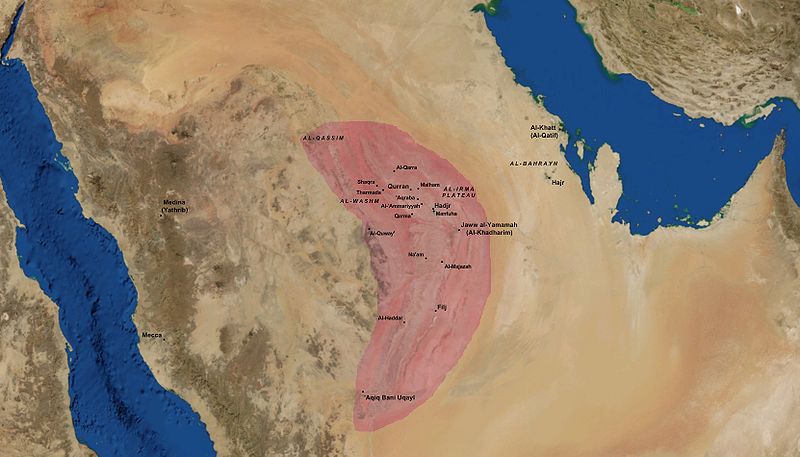
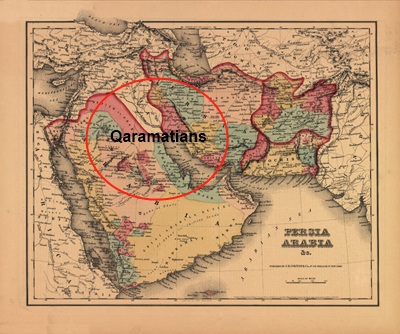
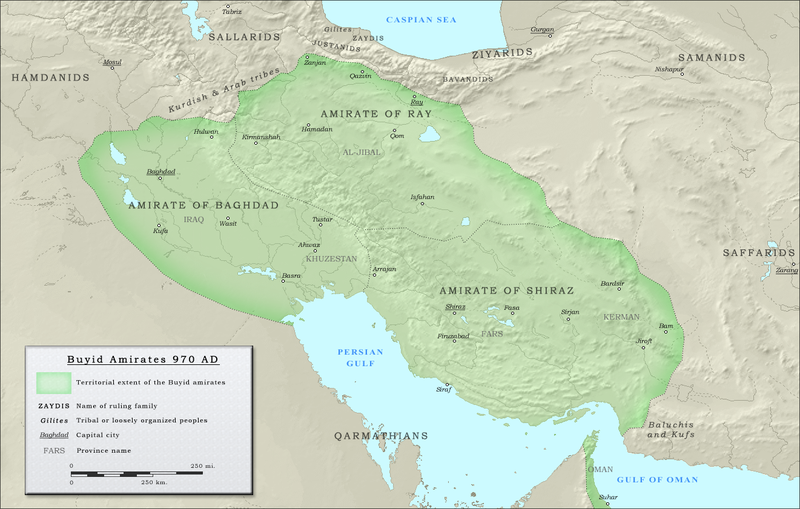
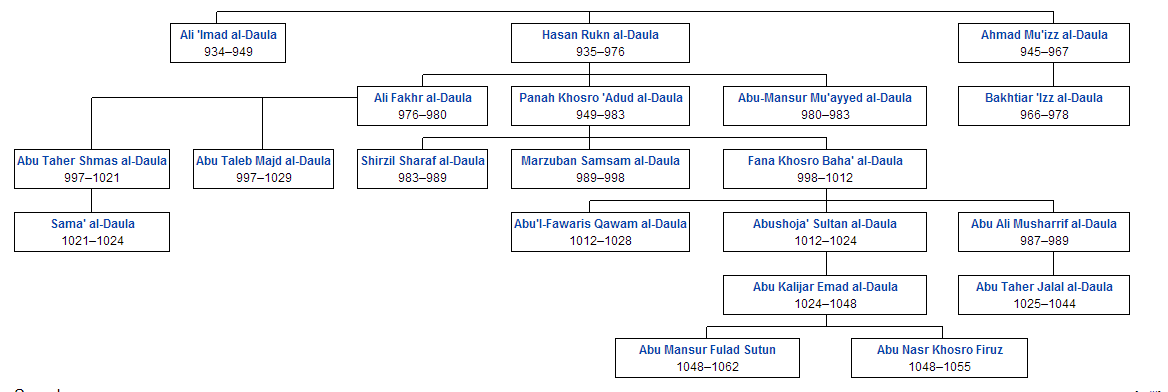
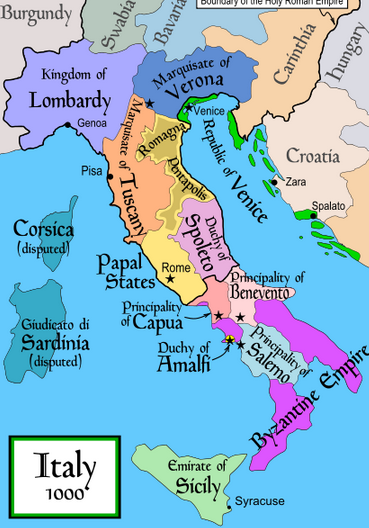
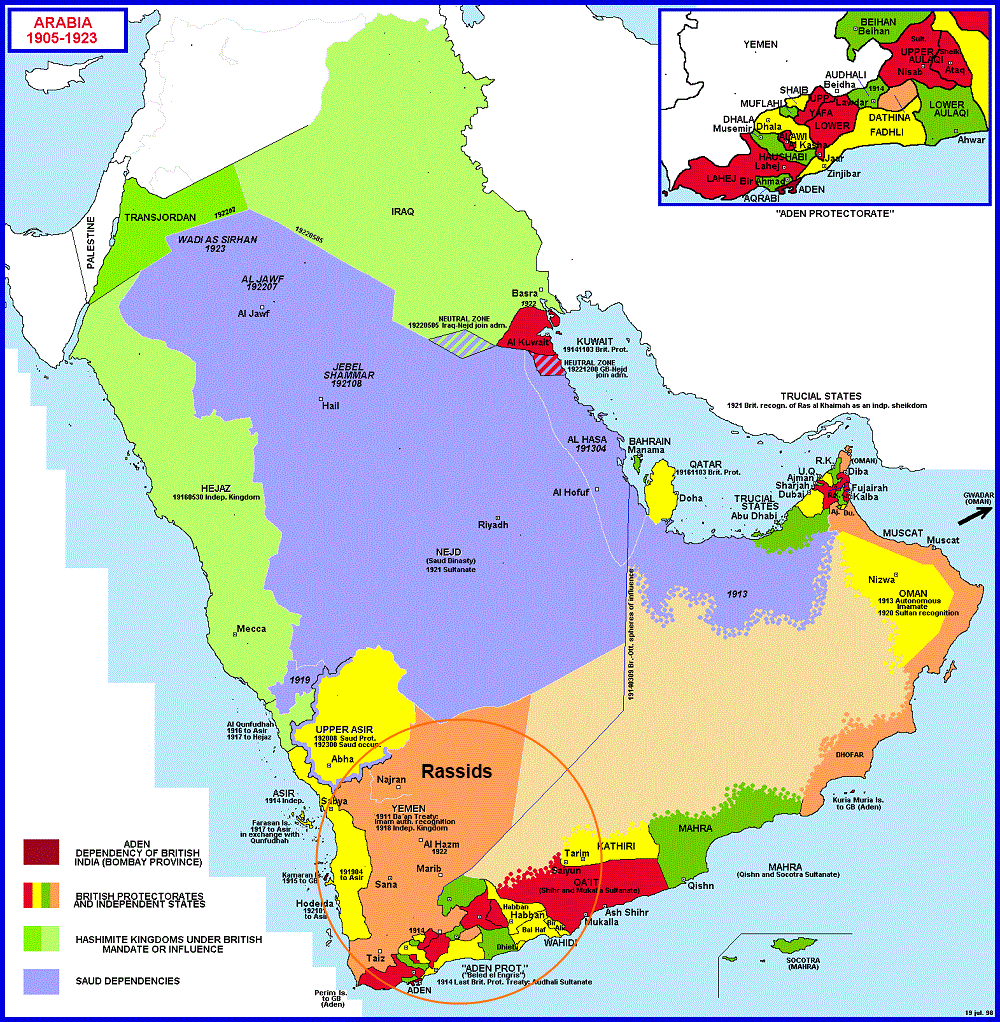
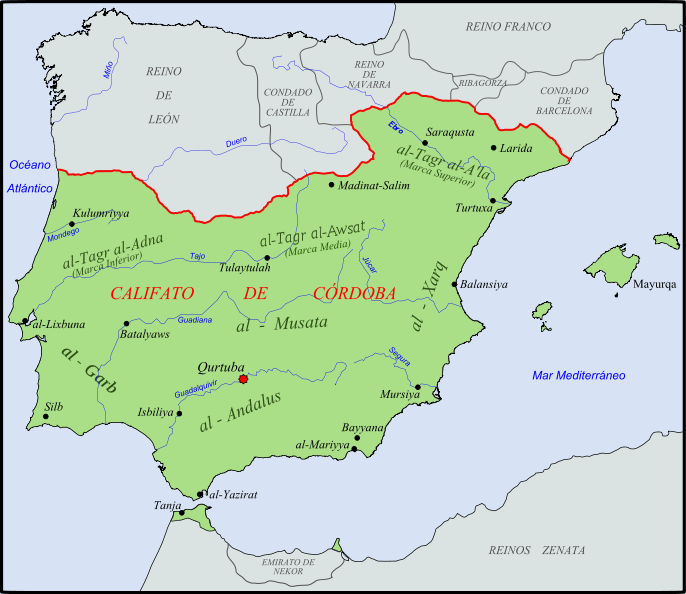
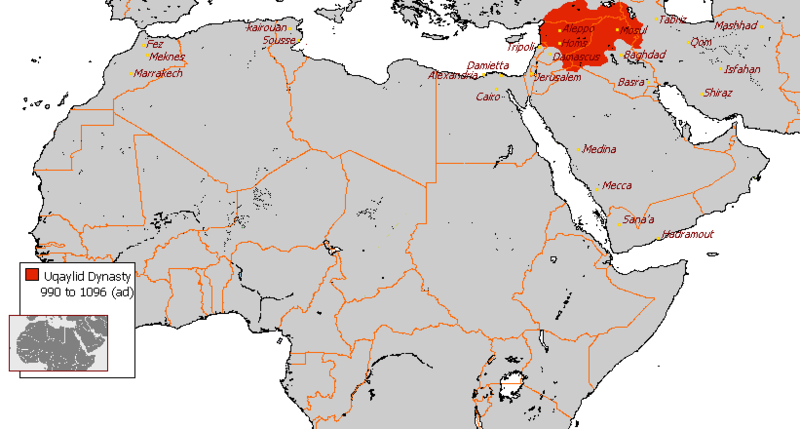
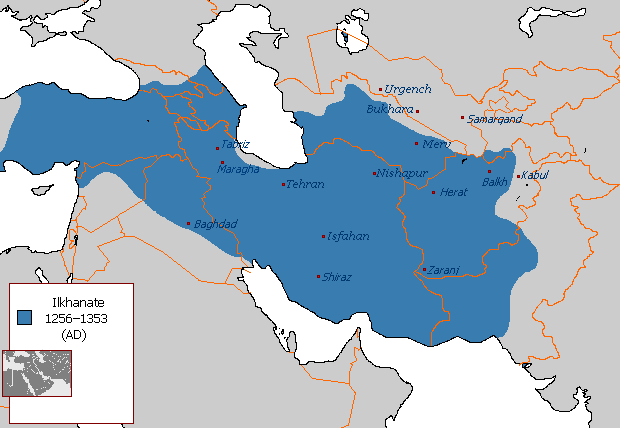
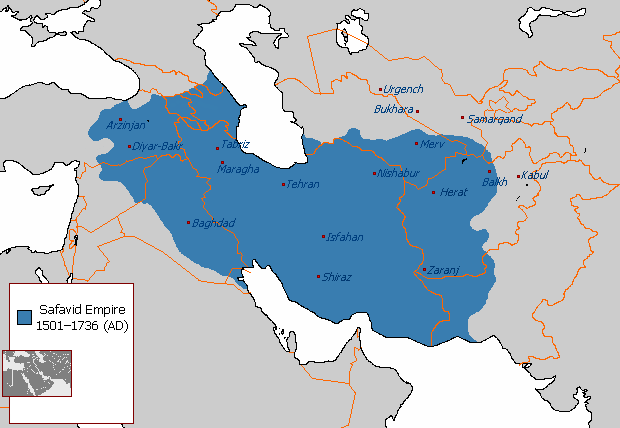
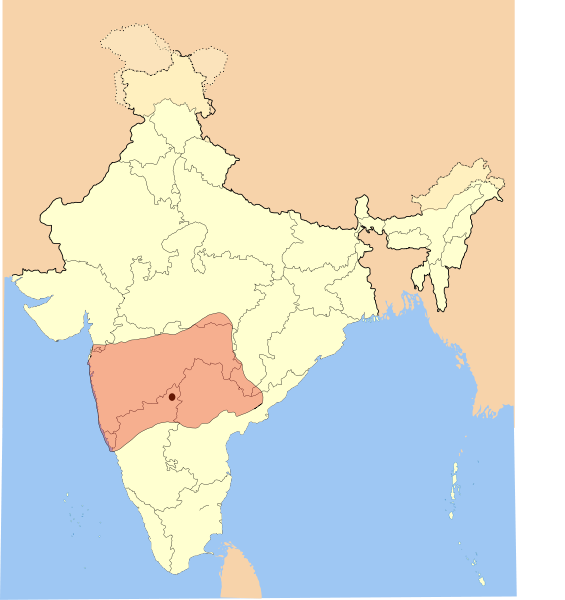
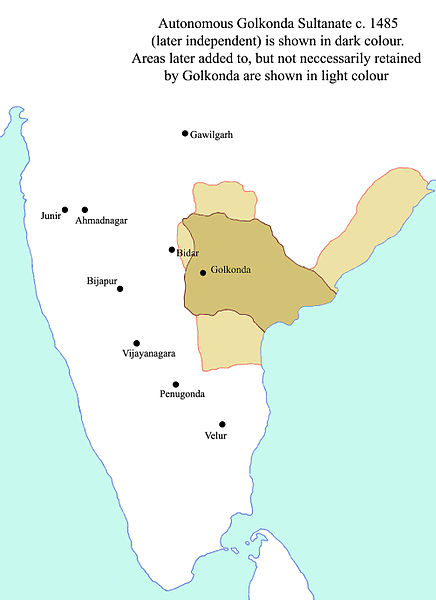
OMG Saudi Arab is in trouble;)
You are forgetting the Luckhnow state in India..
Excellent article! Lots of good information!
This is indeed a very impressive , well researched , well illustrated article on SHIA dynasties .
To balance this, for us , can some one give a parallel picture of non-shia Islamic dynasties.
Further, may one ask what is the significance of these *DYNASTIES* for the common man, today ?
The glory of a GOLDEN past is OK~~~~but most of us live on ordinary bread ( without butter ) in the 21st century.
When one reads about dynasties and kingdoms and empires of history, be they Christian ( Orthodox/Roman / Protestant ) or
Muslim or Hindustani ones, the point to remember that in those medieval days , they faith of the people followed the faith of the Sultan, King,Emperor ( whatever) .
If the King shifted his faith , for political reasons or due to a genuine conversion, then the masses ( his ardent followers) too found it prudent to do likewise.
So to say , for example , that the Talpur dynasty was Shi’ite, is to merely state that its rulers subscribed to
that sect, in private and in political life.
Surely , if Shi’ite dynasties had a such a vast geographic
political reach, then among their subject peoples there must have been folk of all diversities of faith and religious persuasions.
So , yes , politically their rulers may have been Shi’ite~~~the dynasty was Shi’ite, but the people ( which make up the real social base ) may have been mixture of all types of sects.
So are historians justified in lifting up a brush and painting the entire fabric as Shi’ite or Orthodox Christian
etc ?
Great illustration. Thou, there is an err ” Ismail bin Jaffer” was the eldest son of Imam Jaffer Sadiq (a.s).
Also in Buyids dynasty there is a repetition of the same paragraph twice in first and second para.
Keep sharing.
———-
Note from Admin: Nooruddin: Thank you for the suggestions. Changes now made.
I appreciated the article very much .Hope you continue publishing such items .Congratulations
it will be appreciated if names of author are mentioned .It is very important
Good day very cool site!! Guy .. Excellent .. Amazing .. I’ll bookmark your site and take the feeds additionally?I’m happy to search out a lot of helpful info here in the submit, we want develop extra strategies in this regard, thanks for sharing. . . . . .
949514 922884Hello, Neat post. There
Sherri I am looking to buy strategy to take images offmy apple iphone image vault as well as set these individuals upon mymy i-pad2 picture vault assist We forgot this code and had been asking yourself if there ended up being anyways to be able to reset button it and if I could place in ceiling security and safety queries in the event it happens all over again My spouse and i may wish to lose this photographs within it therefore please help me QUICKLY thanks Something else We’ve discovered is actually which for many individuals, less-than-perfect credit score may be the a reaction to situation over and above their handle. As an example they could happen to be saddled with the disease so that they really have too much costs gonna selections. It could be as a result of profession loss or perhaps inability to the office. Occasionally breakup or splitting up can truly send out the actual fiscal situation inside unwelcome direction. Many thanks spreading your ideas for this web page.